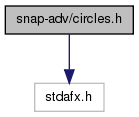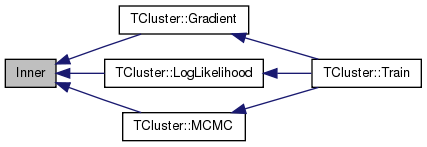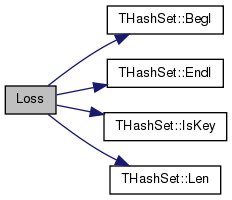|
SNAP Library 6.0, Developer Reference
2020-12-09 16:24:20
SNAP, a general purpose, high performance system for analysis and manipulation of large networks
|
|
SNAP Library 6.0, Developer Reference
2020-12-09 16:24:20
SNAP, a general purpose, high performance system for analysis and manipulation of large networks
|
#include "stdafx.h"
Go to the source code of this file.
Classes | |
| class | TGraphAttributes |
| class | TCluster |
Typedefs | |
| typedef TPt< TGraphAttributes > | PGraphAttributes |
| typedef TPt< TCluster > | PCluster |
Enumerations | |
| enum | lossType { zeroOne = 0, balancedError = 1, fScore = 2 } |
Functions | |
| TFlt | Loss (TIntSet &l, TIntSet lHat, int N, int Which) |
| Compute the loss between a GroundTruth cluster l and a predicted cluster lHat. More... | |
| TFlt | Inner (TIntIntH &Feature, TFlt *Parameter) |
| Inner product for sparse features. More... | |
| typedef TPt<TGraphAttributes> PGraphAttributes |
| enum lossType |
| Enumerator | |
|---|---|
| zeroOne | |
| balancedError | |
| fScore | |
Inner product for sparse features.
Definition at line 349 of file circles.h.
References THash< TKey, TDat, THashFunc >::BegI(), and THashKeyDatI< TKey, TDat >::IsEnd().
Referenced by TCluster::Gradient(), TCluster::LogLikelihood(), and TCluster::MCMC().


Compute the loss between a GroundTruth cluster l and a predicted cluster lHat.
Definition at line 103 of file circles.h.
References balancedError, THashSet< TKey, THashFunc >::BegI(), THashSet< TKey, THashFunc >::EndI(), fScore, THashSet< TKey, THashFunc >::IsKey(), THashSet< TKey, THashFunc >::Len(), and zeroOne.
